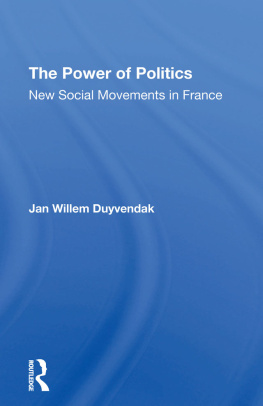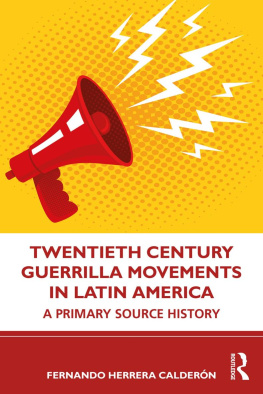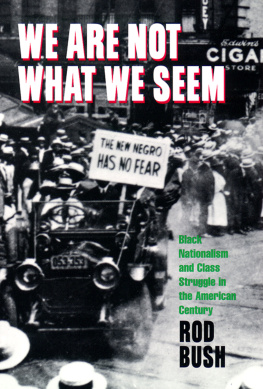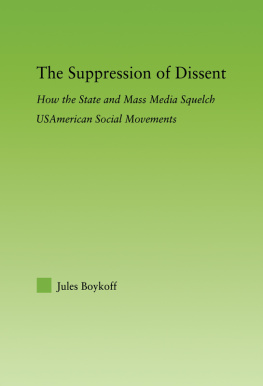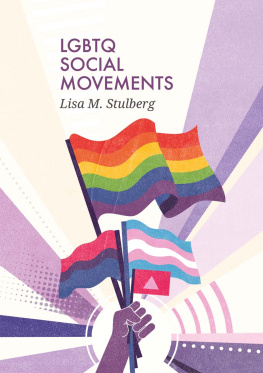
The Struggle Within: Prisons, Political Prisoners, and Mass Movements in the United States
2014 Dan Berger
Foreword 2014 Ruth Wilson Gilmore
Afterword 2014 dream hampton
This edition 2014 PM Press and Kersplebedeb
ISBN: 978-1-60486-955-2
Library of Congress Control Number: 2013956914
Kersplebedeb Publishing and Distribution
CP 63560
CCCP Van Horne
Montreal, Quebec
Canada H3W 3H8
www.kersplebedeb.com
www.leftwingbooks.net
PM Press
P.O. Box 23912
Oakland, CA 94623
www.pmpress.org
Layout by Kersplebedeb
Cover Design: John Yates
Printed in the USA by the Employee Owners of Thomson-Shore in Dexter, Michigan
www.thomsonshore.com
For Safiya (19502003) & for Herman (19422013)
For Laura & for Saleem
For those who generate, imagine, and organize toward freedom

Contents
Acknowledgments
A different version of the main text appeared as The Real Dragons in Matt Meyer, ed., Let Freedom Ring: Documents from the Movements to Free U.S. Political Prisoners (Oakland and Montreal: PM Press/Kersplebedeb, 2008), 346.
Thanks to Matt Meyer for the original volume and the push to draft the original essay, to Bob Lederer for his prodigious editing and analysis, to B. Loewe for the constant inspiration and the many years of being there at the right time, and to Robert Saleem Holbrook (www.freesalim.net) for his organizing and his encouragement to create this book.
Thanks to Ruthie Gilmore and dream hampton for their contributions, and to Laura Whitehorn and Susie Day for the good humor and endless support.
Thanks to all the people on both sides of the wall who have worked to rid the world of racial, sexual, and political repression.
Finally and always, a profound thank you to the many other friends and comrades whose vision and commitment inform my own in too many ways to enumerate.
Foreword
Ruth Wilson Gilmore
SAME BOAT
Back in 1972 Angela Y. Davis eloquently dismantled an interviewers question about the United States, Black people, and violence. At the time she was in jail awaiting trial. The filmed encounter gathered dust for decades in a Swedish archive before appearing in the 2011 documentary Black Power Mixtape. Two things are amazing about the piece. First, that it happened; today its nearly impossible for media to request conversations with specific prisoners in California. Second, the brilliant captive spelled out systemic violence in both general and personal terms, when someone else might have used the opportunity to insist on her own individual innocence.
Abolitions principal theorist and best-known practitioner, Professor Davis has dedicated her entire life to the global struggle against racial capitalisms relentless dispossession. In stark contrast to the former political prisoners example, too much twenty-first century U.S.-based anti-prison advocacy huddles within a safe limit. The goal has become to find people who are relatively or absolutely innocent under the law, and agitate for their release. Make no mistake: getting people out is a good thing. But the persuasive means used to attract attention and gain sympathy often reinforces the deadly belief that aside from some errors confinement reduces more harm than it generates. This kind of thinking detours anti-prison work into a charitable enterpriseto help the so-called deservingrather than what it should bea cornerstone of large-scale fights for social, economic, and environmental justice.
The purpose of abolition is to expose and defeat all the relationships and policies that make the United States the worlds top cop, warmonger, and jailer. Practicalities rather than metaphors determine the focus and drive the analysis, because the scope of prison touches every aspect of ordinary life. Thus, it is possible and necessary to identify all those points of contact and work from the ground up to change them. This ambition makes some people impatient, as well it should. Abolition is a movement to end systemic violence, including the interpersonal vulnerabilities and displacements that keep the system going. In other words, the goal is to change how we interact with each other and the planet by putting people before profits, welfare before warfare, and life over death.
Big problems require big solutions. Nothing happens all at once; big answers are the painstaking accumulation of smaller achievements. But dividing a problem into pieces in order to solve the whole thing is altogether different from defining a problem solely in terms of the bits that seem easiest to fix. In the first instance, the remedy for each piece must develop in relation to its effect on actual or possible remedies for the other pieces. The other way is to solve a small part without considering whether the outcome strengthens or weakens the big problems hold on the world. In other words, theres breaking down and then theres breaking down.
The distinction sketched out above is the difference between reformist reformtweak Armageddonand non-reformist reformdeliberate change that does not create more obstacles in the larger struggle. Some of the timidity in the fight against warehousing humans in cages for part or all of their lives results from the lethal synthesis of abandoned optimism and calculated convenience. People think theres no alternative to capitalism, and in a weird distortion of capitalism itself, imagine all aspects of life as winners and losers in a zero-sum game. Many funders of anti-prison advocacywhether through arrogance or anxietynarrow the scope of what can be done with resources that pass through the tiny social-justice portfolio door. And finally, the challenge seems so enormous that many desperately conclude its better to save the deserving weak (women or children or addicts) and cross their fingers that everyone else can swim on their own.
Why emphasize the social and organizational importance of thinking about the big picture for all activities great and small? Contemporary oppositional political society seems to be constantly reorganizing itself into fragments. While the assertion of particular needs, struggles, and identities must necessarily be part of the project to free ourselves, the structural effect of everyday political disintegration is fatal. It undermines the peoples collective capacity powerfully and self-consciously to transform an already-existing popular front into a unified force. Such a united front wouldcould already!have enough breadth and momentum to change our fate while sustaining our delightful or even irritating differences. Where life is precious life is precious, anywhere on this big fragile boat afloat across the universe.
THE POLITICS OF PUNISHMENT
When it comes to prison, lots of people think of the Thirteenth Amendment to the U.S. Constitution as a window in time through which the hand of the past reaches and directs the present. Lets go back further. Modern prisons developed about the same time that thirteen settler colonies in North America threw off British rule to form the United States. Given the origin of the United States in Indigenous land theft and genocide, chattel slavery, and patriarchy, we know the ruling elite did not put pen to paper to guarantee liberty or equality for any but a few of the all indicated in the Declaration of Independence. So then we have to wonderwhy did they bother with the Bill of Rights, guaranteeing due process and trials by peers, and prohibiting cruel and unusual punishment? A reasonable conclusion is that the guys in charge didnt want their political enemies to be able secretly or singularly to harm them if they should fall.
Next page


